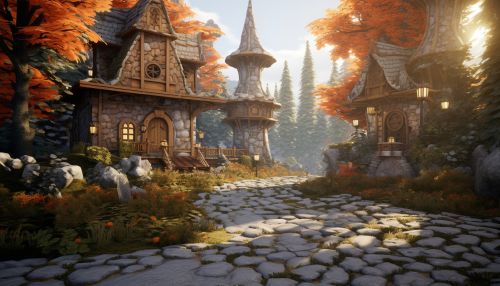Texture Mapping
Introduction
Texture mapping is a method that applies a texture, or image, to a computer graphic's surface. This technique is used to add detail, surface texture, or color to a 3D model's appearance. The process involves assigning a 2D image to the surface of a 3D object. This image, known as a texture map, is then wrapped around the object to give it a realistic appearance.


History
The concept of texture mapping was introduced by Edwin Catmull in 1974. Catmull, a computer scientist and co-founder of Pixar Animation Studios, first presented the idea in his PhD thesis. The technique has since become a fundamental component of 3D computer graphics, used in video games, animation, and visual effects.
Types of Texture Mapping
There are several types of texture mapping, each with its own specific use and effect. These include diffuse mapping, bump mapping, normal mapping, displacement mapping, specular mapping, and reflection mapping.
Diffuse Mapping
Diffuse mapping, also known as color mapping, is the most common form of texture mapping. It involves applying a 2D image to a 3D object to give it color and detail. This type of mapping is used to create the base color of an object.
Bump Mapping
Bump mapping is a technique that simulates bumps and wrinkles on the surface of an object. This is achieved by using a grayscale image, where the shades of gray represent the height of the bumps. Bump mapping does not change the shape of the object, but rather alters the way light interacts with it, creating the illusion of a bumpy surface.
Normal Mapping
Normal mapping is a variation of bump mapping. Instead of using a grayscale image, normal mapping uses a full-color image to represent the surface's normals – vectors perpendicular to the surface. This allows for more detailed and realistic lighting effects.
Displacement Mapping
Displacement mapping is a technique that alters the geometry of an object based on a texture map. Unlike bump and normal mapping, which only affect the object's appearance, displacement mapping physically changes the object's surface.
Specular Mapping
Specular mapping is used to define the shininess and highlight color of an object. It works by controlling the specular reflection – the mirror-like reflection of light from a surface. A specular map is a grayscale image, where white areas represent high shininess and black areas represent low shininess.
Reflection Mapping
Reflection mapping, also known as environment mapping, is a method of simulating reflective and refractive surfaces. Instead of reflecting the actual environment, it uses a precomputed texture to represent the environment around the object.
Texture Mapping Process
The process of texture mapping involves several steps, including creating the texture map, mapping the texture to the object, and rendering the final image.
Creating the Texture Map
The first step in texture mapping is to create the texture map. This is usually done in a 2D image editing software like Photoshop or GIMP. The texture map can be a photograph, a hand-drawn image, or a computer-generated image.
Mapping the Texture to the Object
Once the texture map is created, it needs to be mapped to the 3D object. This is done using a process called UV mapping. UV mapping involves assigning each vertex of the 3D object to a coordinate on the 2D texture map. This process is usually done in a 3D modeling software like Blender or Maya.
Rendering the Final Image
After the texture is mapped to the object, the final image can be rendered. During rendering, the 3D software calculates how the texture map interacts with light, creating a realistic image.
Applications
Texture mapping is widely used in various fields, including video games, animation, visual effects, and architectural visualization. It is a crucial component in creating realistic and detailed 3D graphics.
